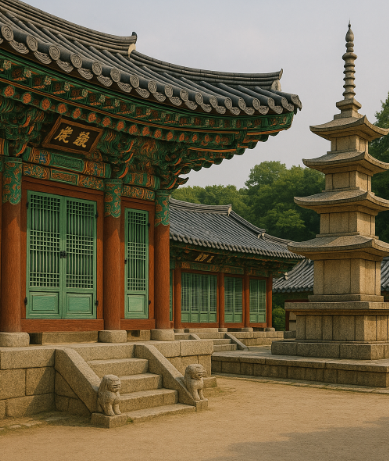Korean Folk Music: The Heartbeat of Tradition
Korean folk music, known as “minyo,” is a window into the vibrant cultural history of Korea. This traditional form of music has been passed down through generations, serving as a means of expressing emotions, storytelling, and preserving history. In this blog post, we will explore the origins, instruments, and various styles of Korean folk music, revealing its significance in both historical and modern contexts.
Origins of Korean Folk Music
The roots of Korean folk music can be traced back centuries, evolving with the country’s social and cultural changes. Originally, minyo was developed as a form of agricultural songs, sung by farmers to help synchronize tasks in the fields. Over time, it grew to encompass songs of love, life, and lament, reflecting the everyday lives of people across different regions.
The underlying themes of minyo often deal with nature, community, and the hardships and joys of rural life. This music was an oral tradition, passed down through performances at community gatherings, festivals, and rituals, allowing it to evolve organically with communal participation.
Traditional Instruments
Korean folk music features a variety of traditional instruments that contribute to its unique sound. These instruments include the gayageum (a zither-like string instrument), the janggu (an hourglass-shaped drum), and the daegeum (a large bamboo flute). Each instrument brings its own distinct tone, enhancing the richness of minyo performances.
Common Korean Folk Instruments:
| Instrument | Description | Sound |
|---|---|---|
| Gayageum | A zither with 12 strings, played by plucking. | Mellow and resonant |
| Janggu | An hourglass-shaped drum, played with hands or sticks. | Rhythmic and versatile |
| Daegeum | A large transverse bamboo flute with a distinctive sound. | Deep and airy |
Regional Styles and Variations
One of the fascinating aspects of Korean folk music is its regional diversity. Different areas of Korea cultivated their own styles of minyo, reflecting local dialects, traditions, and environments. For instance, the soulful “Namdo” style from the southern regions is known for its emotive melodies, while the “Pyeongchang Arirang” from the eastern mountains carries a more robust, lively rhythm.
Such regional variations make Korean folk music a lively tapestry of sound, offering something unique and culturally significant to each area. This diversity ensures the music’s relevance and adaptation over time, maintaining its importance in Korean culture.
The Role of Folk Music in Korean Society
Korean folk music still holds a special place in contemporary Korean society. It is frequently performed at cultural events, national holidays, and festivals, serving as a reminder of Korea’s rich heritage. Korean folk songs are also taught in schools, ensuring that the younger generation appreciates and understands their cultural legacy.
Moreover, efforts to preserve and promote minyo continue through cultural institutions and media, reflecting Korea’s commitment to maintaining its historical art forms. Such initiatives ensure that traditional music remains an integral part of Korean identity and cultural pride.
The Modern Influence of Korean Folk Music
In recent years, Korean folk music has witnessed a resurgence through modern renditions and collaborations. Artists across various genres are blending traditional Korean instruments and melodies with contemporary music styles, creating innovative and engaging new sounds. This fusion highlights the adaptability of minyo, showcasing its timeless appeal to audiences worldwide.
The global interest in Korean culture, buoyed by the Korean Wave or “Hallyu,” has further propelled Korean folk music into the spotlight, allowing international audiences to appreciate this unique art form.
FAQ
What is “minyo” in Korean folk music?
Minyo refers to traditional Korean folk songs that reflect various aspects of daily life, nature, and emotions.
How are traditional Korean instruments used in folk music?
Traditional Korean instruments such as the gayageum, janggu, and daegeum contribute unique sounds and are integral to minyo performances.
Is Korean folk music still popular today?
Yes, Korean folk music continues to be celebrated in festivals and cultural events and is increasingly gaining popularity through modern reinterpretations.
Summary
- ✅ Korean folk music, known as “minyo,” has its roots in agricultural practices and local traditions.
- ✅ Instruments like the gayageum, janggu, and daegeum are pivotal to the music’s unique sound.
- ✅ Regional variations offer diverse musical styles across Korea.
- ✅ The cultural significance of minyo remains strong in modern Korean society.
- ✅ Contemporary artists are merging traditional sounds with modern music styles.
#KoreanCulture #FolkMusic #Minyo #TraditionalMusic #Gayageum #Janggu #Daegeum #CulturalHeritage #KoreanTradition #KoreanInstruments #MusicFusion #KoreanArt #KoreanSociety #KPop #Hallyu #KoreanRoots #RegionalMusic #KoreanFestivals #MusicHistory #CulturalDiversity #ModernMusic #MusicEvolution #TraditionalInstruments #MusicAdaptation #CulturalEvents #Korea #HistoricalMusic #KoreanIdentity #ArtandCulture #Traditions #Preservation

https://shorturl.fm/Ebtun
https://shorturl.fm/SMgyt
https://shorturl.fm/XFCeF